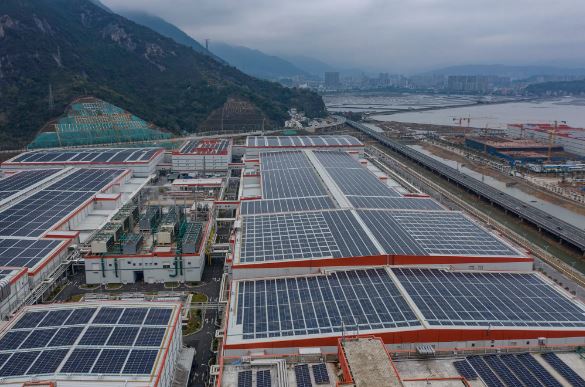China’s rapid ascent in the electric car industry, now causing ripples of concern and talk of trade wars, has roots that stretch back decades to university laboratories in Texas. It was there that researchers discovered how to create batteries using abundant and inexpensive minerals. Building on these early discoveries, Chinese companies have since mastered the art of making these batteries more powerful, durable, and affordable. This advancement has enabled China to produce the majority of the world’s electric cars and numerous other clean energy technologies.
This battery innovation is just one example of how China is catching up to — and in some areas surpassing — the technological and manufacturing capabilities of advanced industrial democracies. China is making significant strides in a variety of sectors, including pharmaceuticals, drones, and high-efficiency solar panels. The challenge China poses to the technological dominance the United States has held since World War II is evident in the country’s educational system, corporate investments, and government directives.
A considerably larger proportion of Chinese students major in science, technology, engineering, and math (STEM) fields compared to their counterparts in other major nations. This trend is growing as overall higher education enrollment in China has expanded more than tenfold since 2000. In tandem with this, China’s investment in research and development (R&D) has skyrocketed, tripling over the past decade. This surge has propelled China into the second spot globally, just behind the United States. Recent data from the Australian Strategic Policy Institute indicates that Chinese researchers lead the world in publishing highly cited papers in 52 out of 64 critical technologies.
Last month, China’s leadership underscored its commitment to advancing scientific research. In a once-a-decade meeting of the Communist Party, scientific training and education were highlighted as key economic priorities, second only to the strengthening of the Party itself. Huai Jinpeng, China’s Minister of Education, emphasized that the country would make “extraordinary arrangements for urgently needed disciplines and majors” as part of a national strategy to cultivate top talent.
In China, the emphasis on STEM education is evident, with a majority of undergraduates and three-quarters of doctoral students majoring in these fields. In contrast, only about a fifth of American undergraduates and half of doctoral students pursue similar disciplines. This educational focus has given China a significant edge, particularly in the realm of battery technology. The Australian Strategic Policy Institute reports that 65.5% of widely cited research papers on battery technology come from China, compared to just 12% from the United States. Both of the world’s largest electric vehicle (EV) battery manufacturers, CATL and BYD, are Chinese companies.
Central South University in Changsha, a city in south-central China and a hub of the country’s chemical industry, exemplifies China’s growing expertise in this field. The university, with nearly 60,000 students, boasts state-of-the-art facilities for battery research. Laboratories equipped with advanced technology, such as electron microscopes, enable researchers to test new battery chemistries on a large scale. Professor Peng Wenjie, who runs a nearby battery research company, has over 100 graduates from doctoral and master’s programs working around the clock on these innovations.
China’s expanding manufacturing capabilities have sparked debate in the United States about whether to collaborate with Chinese companies or to attempt to replicate their successes independently. Feng An, the founder of the Innovation Center for Energy and Transportation, argues that the quickest way for the U.S. to build up its supply chain is to invite Chinese companies to set up factories.
However, the geopolitical implications of China’s manufacturing dominance are becoming increasingly contentious. Government subsidies and policies that have fueled China’s industrial boom have led other nations to approach Chinese exports with caution. The European Union, for example, has imposed provisional tariffs on electric vehicles from China, while the United States has used tariffs to effectively block Chinese EV companies from entering the market. Despite these challenges, Chinese battery manufacturers are still exploring ways to establish production facilities in the United States, though the costs are significantly higher and the work much slower compared to China.
The U.S. continues to outpace China in overall research spending, accounting for 3.4% of its economy compared to China’s 2.6%. However, China’s investment is rising, raising critical questions about the future of global technological leadership. Craig Allen, president of the U.S.-China Business Council, posed a pivotal question: “What happens when China passes the U.S. in R&D and they have the manufacturing base?”
China’s strategic investments in education, research, and manufacturing have positioned it as a formidable competitor in the global technological arena, with its advancements in battery technology serving as a prime example of its growing influence.

